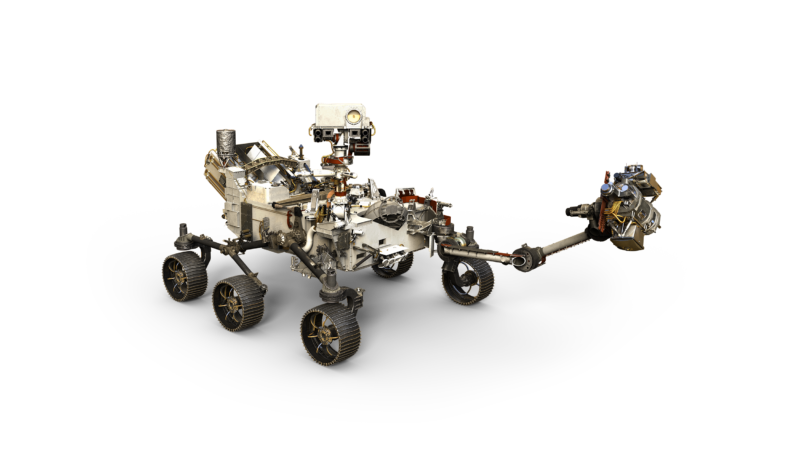Next-generation rover developers use AI to increase rover efficiency

Source: Wikimedia Commons
Currently, sending people to Mars is only possible in theory. This idea burns Ilon Mask, who is doing everything to ensure that the Red Planet is mastered. But most of the space agencies of different countries are interested in visiting not Mars, but the Moon, with the subsequent establishment of a colony there. This is both simpler and more economical, and it seems to be more profitable - for example, on the moon there is helium-3 , which is necessary for obtaining energy in thermonuclear reactors.
Whatever it was, but Mars continues to study. NASA is now planning to send the next generation rover there. It will be made "smart" with the help of AI, so that the device can perform a larger range of functions than it is now. In particular, with the help of AI it is possible to solve the problem of signal delay - from the Earth to Mars a radio wave travels in 13 minutes. Thus, if something unforeseen happens during this period of time, the rover is unable to respond - it is simply not capable of it.
There are elementary security systems that prevent too obvious threats. But we are not talking about something more advanced.
The AI will give the management team the opportunity to focus on complex issues, solving trivia on their own. Thus, the management team will have more time to solve scientific problems. According to the developers, the AI of the rover will be something of a colleague for the whole team. Of course, it will be impossible to communicate with him - artificial intelligence has not yet reached this level. But to perform tasks for which the previous rovers were unable, he can.
It is worth noting that NASA is not new to the use of artificial intelligence technologies. But in most cases, AI helps scientists in analyzing data from other devices and systems. For example, highlighting irregularities on the map, estimating changes in the luminosity of stars to detect exoplanets, etc.
One of the early cases of using "smart" technologies by scientists from NASA is the development of the Earth Observing One. It was launched in November 2000. The on-board computer of the system was equipped with specialized software that enabled the satellite to respond to various factors, including the data that the image detectors collected. If a number of conditions were met, the triggers worked, and the system performed a specific task. This could be the completion of the observation of the object and the correction of the orbit.
The NASA satellite was “trained” to determine the eruption of volcanoes - according to the image obtained from the cameras. As soon as the specialized software detected eruptions, special “rapid response” mechanisms were launched, and the satellite could, for example, examine the place of a large eruption on the next turn around the planet. The on-board computer calculated how much time was left until the next observation and determined how much time was needed to study the scene of events. In addition, as mentioned above, the satellite could independently change the height of the orbit if that was necessary.

As for the rover, it is a much more complex system than a satellite that monitors volcanic eruptions. Mars 2020 should be able to solve unpredictable problems. One thing is to calculate the time of observation of a volcano and another is to make a decision depending on changing conditions, for example, the appearance of potentially interesting minerals to scientists.
The operators of the command of the rover will have a priority in making decisions - human actions will have a higher status than decisions made by the rover. In any case, until the AI becomes even more advanced than it is now. AI Group will be involved in its implementation in NASA JPL .
It should be noted that NASA staff consider the use of AI in the space program rather the exception than the norm. There are other missions where similar methods of work are used, but not so many.
The new rover is scheduled to launch in the summer of 2020 with the arrival in February 2021. The rover is intended for astrobiological studies of the ancient environment on Mars, the surface of the Red Planet, studies of the evolution of geological processes and the assessment of the possibility of habitability of the Earth’s neighbor in the past. In addition, an important task is to search for evidence of life within the available geological materials. For the first time, NASA announced the Mars 2020 mission in December 2012.
